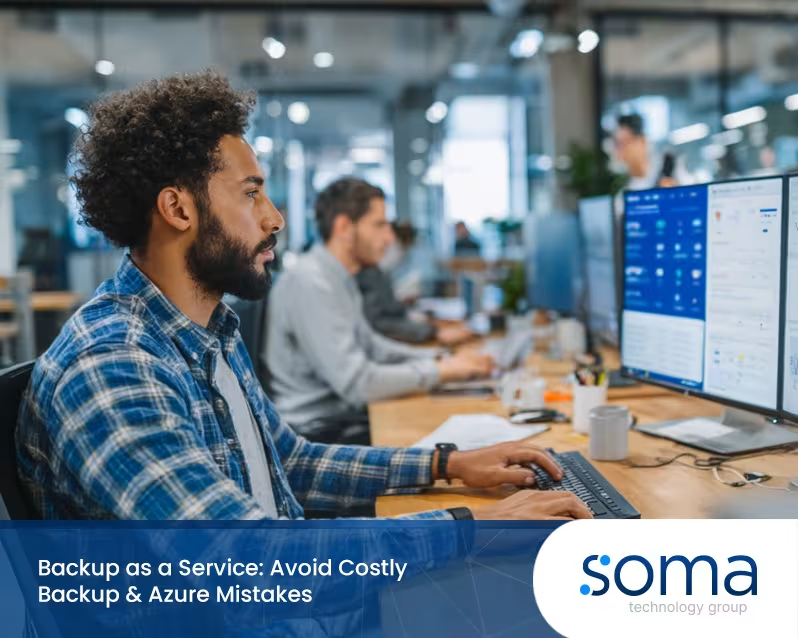
Ultimate Cyber Essential Checklist: Protect Your Digital Assets
Have you ever wondered how some businesses consistently stay ahead of the curve in today's digital age? It's not just luck; it's robust cybersecurity practices.
According to the National Cyber Security Centre, cyber-attacks cost UK businesses billions yearly. With threats becoming increasingly sophisticated, it's crucial to have a solid defence in place.
In this blog, we'll explore the steps your business needs to take to achieve cyber essentials certification and provide you with a comprehensive Cyber Essential checklist. Let's dive in and safeguard your digital assets against the ever-evolving landscape of cyber threats.
Why Cyber Essential matters
Cyber Essentials certification provides a framework to protect your business against common cyber threats, ensuring you can operate securely and confidently. Here's why cyber essentials are crucial for your business.
Protecting your business
Cyber attacks can have devastating consequences, from data breaches to financial losses. These incidents can damage your reputation, erode customer trust, and result in costly downtime.
Cyber Essentials can mitigate these risks by implementing essential security measures to safeguard your organisation's critical assets. You create a more resilient and secure business environment by proactively addressing potential vulnerabilities.
Winning more business
Clients and partners are increasingly looking for assurance that their data is secure. Achieving Cyber Essentials certification demonstrates your commitment to cybersecurity, making your business more attractive to potential clients, particularly in sectors that handle sensitive information.
This certification can give you a competitive edge, as many companies prefer to work with partners who have verified security practices. Following a comprehensive Cyber Essential checklist ensures you meet all requirements and showcases your dedication to maintaining high-security standards.
Compliance with regulations
Regulations like GDPR require businesses to implement strong security measures to protect personal data. Cyber Essentials provides a solid foundation for meeting these requirements, ensuring your business complies with the latest standards. Compliance with these regulations helps avoid hefty fines and builds trust with customers and stakeholders.
Demonstrating that you take data protection seriously can enhance your brand's reputation and show that you are committed to safeguarding the privacy and security of your client's information.

The comprehensive Cyber Essential checklist
Achieving Cyber Essentials certification involves implementing several vital components to secure your business against common cyber threats. Here are the critical elements you need to focus on:
1. Secure configuration
Ensuring your systems are configured securely is the first step towards achieving Cyber Essentials certification. This includes removing or disabling unnecessary software, changing default passwords, and implementing strong password policies.
Regularly update and patch systems to protect against vulnerabilities, ensuring your configurations remain secure and resilient against evolving threats.
2. Boundary firewalls and internet gateways
Firewalls act as the first line of defence against cyber attacks. Ensure that your firewall settings are robust and that only necessary ports and services are open. This includes setting up rules to manage inbound and outbound traffic, regularly updating firewall rules and settings, and keeping only essential ports open to minimise vulnerabilities.
3. Access control
Limit access to your data and services to only those who need it. Implementing access control measures, such as user access management and multi-factor authentication, helps prevent unauthorised access.
Role-based access control (RBAC) assigns permissions based on user roles, ensuring users access only necessary information. Multi-factor authentication (MFA) adds an extra layer of security, and regular reviews and updates of access permissions ensure that access remains appropriate and secure.
4. Malware protection
Use anti-malware software to protect against malicious software. Regularly update your anti-malware solutions and perform vulnerability scans to detect and address potential threats.
This includes installing and periodically updating anti-malware software on all devices, conducting regular scans to detect and remove malware, and educating employees about common cyber threats like phishing.
5. Patch management
Keeping your software up to date is crucial. The Cyber Essential checklist ensures that all systems and applications are regularly updated with the latest security patches to protect against known vulnerabilities.
This includes regularly checking for and applying software updates and patches, automating the update process where possible to ensure timely application, and monitoring systems to ensure patches are applied correctly.

Steps to achieve Cyber Essentials certification
Achieving cyber essentials certification is crucial in strengthening your organisation's cybersecurity posture. According to Cybersecurity Ventures, cybercrime damages will cost the world $6 trillion annually, underscoring the critical importance of robust cybersecurity measures.
This section will guide you through the audit and assessment procedures, implementing strong access controls, and addressing vulnerabilities to protect against cyber attacks.
Audit and assessment procedures for cyber security compliance
Ensuring your organisation meets cybersecurity compliance starts with thorough audits and assessments outlined in the Cyber Essential checklist. Familiarise yourself with the UK government and NCSC's standards, which provide a foundation for securing your IT infrastructure.
Conduct a Cyber Essential self-assessment to evaluate your security measures and identify gaps. Engage an external assessor for a technical audit to ensure compliance with the checklist. Regular audits help maintain a high level of security and ensure ongoing compliance.
Implementing firm access control and user authentication
Adequate security starts with controlling who can access your systems. Firm access control and multi-factor authentication can prevent unauthorised access and protect your business. Here's how to get started.
- Access control: Limit network and sensitive data access to authorised personnel. Strictly control admin and high-level access with user management practices.
- User authentication: Multi-factor authentication (MFA) adds an extra layer of security by requiring multiple verification forms, significantly reducing the risk of unauthorised access.
- Security controls for user devices: Ensure all devices, including mobile ones, have robust security systems and up-to-date antivirus software. Regularly updated to protect against vulnerabilities.
Addressing vulnerabilities and protecting against cyber attacks
Protecting your business from cyber attacks requires proactive measures to identify and address vulnerabilities. This section will explore strategies from the Cyber Essential checklist to strengthen defences and safeguard digital assets against evolving threats.
- Identify vulnerabilities: Perform vulnerability scans regularly to detect security weaknesses. Apply patches promptly and keep your software up-to-date to prevent cyber attacks.
- Implement cyber security measures: Deploy comprehensive cybersecurity measures, such as firewalls, intrusion detection systems, and anti-malware solutions, to protect your network from malicious activities.
- Prepare for common cyber attacks: Understand the difference between cyber threats and prepare accordingly. Your team needs cyber essentials training to recognise and respond to common cyber attacks, such as phishing and ransomware.

Partnering with Soma for cybersecurity excellence
At Soma, we understand the complexities of achieving a Cyber Essential checklist and maintaining robust cybersecurity measures. Our expert team guides you through every step, from implementing secure configuration practices to establishing adequate access controls and malware protection strategies.
We provide tailored solutions that align with your business's needs, ensuring your systems protect against the latest threats.

Final thoughts
With Soma, achieving the Cyber Essential checklist empowers your business with top-tier cybersecurity, expert guidance, and reliable support. Don't let cyber threats compromise your success; embrace the strength of robust security measures.
Contact us at Soma Technology Group. Take the first step towards securing your business and ensuring a safer digital future.
Frequently asked questions
What is the Cyber Essential checklist?
The Cyber Essential checklist is a set of security requirements and controls designed to help organisations enhance their cybersecurity posture.
How do I achieve cyber essentials plus certification?
To achieve the cyber essentials plus certification, organisations must undergo a detailed assessment of their security measures by a certified certification body.
What are the requirements for cyber essentials plus certification?
Cyber Essentials Plus certification requirements include implementing additional security measures beyond the basic Cyber Essentials certification, such as vulnerability scans and onsite assessments.
What is included in the Cyber Essentials Plus checklist?
The Cyber Essentials Plus checklist includes a series of technical security controls organisations must meet to demonstrate their commitment to cybersecurity best practices.
How does Cyber Essentials Plus differ from ISO 27001?
Cyber Essentials Plus focuses on specific technical controls to protect against common cyber threats, while ISO 27001 is a broader information security management standard that covers policies, processes, and risk management.
How can I get Cyber Essentials Plus for my organisation?
Organisations can obtain cyber essentials by implementing the necessary security controls, conducting a self-assessment, and undergoing a certification assessment by an accredited certification body.
What is the difference between Cyber Essentials and Cyber Essentials Plus?
Cyber Essentials focuses on fundamental security hygiene, while Cyber Essentials Plus requires a more rigorous assessment of an organisation's security measures, including vulnerability scans and onsite evaluations.
How often do I need to renew my cyber essentials certification?
Cyber Essentials certification must be renewed annually to ensure your organisation maintains its security standards and follows the latest cybersecurity practices.
.svg)
.webp)


